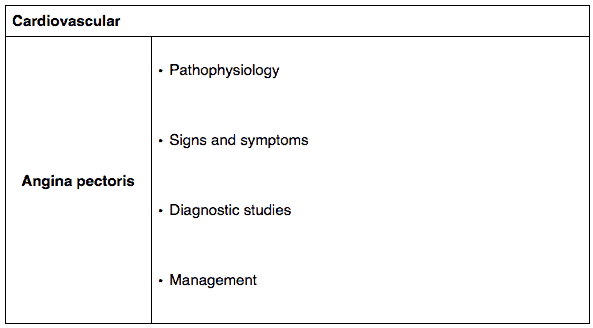How To Rock Your Clinical Rotations and End of Your Rotation Exams

PA school is full of many firsts: first day of didactic year, first didactic exam, first standardized patient, and then your first REAL patient on your first clinical rotation. The transition between didactic year and clinical year is a big one. You go from the comfortable academic environment with the same classmates, hidden behind your computer, to a completely new environment with new faces and personalities to adjust to. To top it off, your environment and everything that comes with it changes roughly every 4–5 weeks. There will be many ups and downs, but hopefully after reading this, there will be more ups during your clinical rotations.
Before the start of any rotation, you need to make sure you are credentialed at the clinical site. This may be as simple as sending proof of your health documents (vaccines, PPD status, physical exam) or as lengthy as attending an orientation and completing online classes prior to starting the rotation. It is important to review these requirements ahead of time. In some cases, the orientation or classes are only offered a certain time each month, or your PPD may be out of date (a problem I ran into a few times). Once you are credentialed, reach out to the preceptor at least 1–2 weeks in advance so you know when and where to report on your first day.
The first day of your rotation will become easier as you move along clinical year. Though, each day will require some degree of preparation. Before each first day, I always scoped out the location and commute ahead of time. I figured if I knew where I was going, it would be one less thing to worry about that morning. I also spent time organizing the things I would need during my day. I tried my best to not bring a large bag or a large lunch box because on some rotations there was minimal space for students to keep their belongings. With this being said, many things will get stuffed into your white coat pockets. Here are some of my favorite items I kept in my pockets:
- Stethoscope, penlight, pocket Snellen chart
- Miscellaneous medical supplies (roll of tape, gauze, tourniquet, extra butterfly needles/IVs, etc). Pay attention to what your preceptor uses because if they forgot something and you have it, you will feel like a mini hero!
- Multiple colored pens and highlighters
- Small notebook for taking notes
- Hearty granola bar or something you can snack on, on the go
- Pocket Medical Books: EMRA Antibiotic Guide, Handbook of Internal Medicine, and Maxwell Quick Medical Reference (these may change each rotation, but I found I always used these)
With your belongings packed and organized, you are ready for your first day! Be sure to arrive early, and go in with a clear, open mind. As tempting as it may seem, try your best not to ask your peers about the rotation. Things may change: preceptors may be on vacation, staff may have changed, you may not be the only student, or there may just be different opportunities depending on the timing of the rotation. For example, I had one rotation June to July, which is around the time when senior residents are finishing up and the intern residents are starting. Because of this, the hours were slightly different than the students who had previously rotated, as there were no extra lectures to attend. Also, because the senior residents were off studying, the students had slightly more responsibilities and different roles. It is best to present on your first day to your preceptor and ask them (rather than the students who have previously rotated) any questions you have about the rotation; be sure to get a clear understanding of your role on the rotation and what the expectations are. This will make your days easier and you will feel more like part of the team.
Where I work, we have high expectations for students, and they are certainly integrated into our Emergency Department team. I have had the privilege to work alongside several students from different PA programs and at different stages in their clinical years, and I’m going to share the qualities that I believe a great PA student encompasses.
I find that the best students know when it is appropriate to get involved. They know their role on the team, perform tasks they are comfortable managing, and ask for assistance when needed.
To start, be professional: arrive on time (or early) and be dressed appropriately, making sure your white coat is not covered in coffee/blood/unknown body fluid stains. As stated before, know your role and responsibilities and never step beyond them. I find that the best students know when it is appropriate to get involved. They know their role on the team, perform tasks they are comfortable managing, and ask for assistance when needed. Students should not be asking to perform an unrealistic procedure such as an intubation but instead look for ways to assist, no matter how small it may seem (e.g., handling gloves or keeping family members informed).
Additionally, great students are active with me and my staff. They are asking the nurses if they need assistance with blood draws or IV insertions, or asking the other providers if they need any help. They say “yes” to performing procedures and never, ever respond with “It’s okay, I’ve already completed enough of that procedure,” or “I already know how to do that.” Hearing these words is one of my biggest pet peeves because you should be using your time as a student to get as much practice as possible. As a provider, you will be expected to already know how to perform basic procedures well and will not be provided with as much assistance. So, if someone asks you to go perform a pelvic exam with them, go! Even if you did your OB/GYN rotation in a clinic and performed 10 pelvic exams a day, you never know what tips and tricks you could learn from a different provider.
They say “yes” to performing procedures and never, ever respond with “It’s okay, I’ve already completed enough of that procedure.”
Speaking of tips and tricks, my best students have also listened to my critiques and have actually applied them. I remember mentioning to a student she needed to work on her subjective portion of her SOAP note. A few shifts went by and I noticed a 100% improvement in her note writing. I complimented her and she said she spent time reviewing providers’ notes and was able to gain a better understanding of how the ED note was structured. This is also a good example of using your time appropriately while on a rotation: you should always be bettering yourself on the rotation. You should try your best to limit the time you spend logging patients, dealing with personal matters, or being on your cell phone. Be sure you always tell your preceptor where you are going, and never be afraid to ask to grab lunch (that part is very important)!
Rotation Exams
Now that you’re hopefully feeling more confident about the rotation itself, let’s get you feeling better about your rotation exams. My program used the Physician Assistant Education Association (PAEA) End of Rotation Exams™ (EORs). I personally found these exams tough. I went from averaging high 80s to 90s on my program’s exams to averaging low to mid-80s. However, I did find they prepared me well for the PANCE.
For me, studying for my clinical year exams was slightly different than my didactic year exams. I went from having two exams every week to having one exam at the end of every rotation, or every five weeks. Having one exam every five weeks can actually make it more difficult to study–it is easy to continuously “postpone” your studying because you think you have more time, and then you get stuck cramming at the last minute. For this reason, I recommend starting early and studying a little bit at a time. I would usually give myself the first week off, and then start studying the first weekend. For each rotation, I adhered to the EOR™ topic list and blueprint and created a study guide. My study guide was typed and consisted of two columns: one with the disease, and the second with all the pertinent information about the disease.
I left the space under the disease name blank, so while reviewing the study guide I could handwrite any pertinent pearls. I began studying with the topic that was covered in greatest percentage on the exam and worked my way down to the smallest percentage. It’s important to pay attention to the topic lists and blueprints because the topics and contents change with each clinical rotation. For example, on the pediatric exam, dermatology and EONT make up 30% of the exam, while these topics are not even on the internal medicine exam. By typing your study guides, you can save time by copying and pasting if the topics are repeated in future EOR™ exams. You will also have clean, concise study guides to use when you are studying for the PANCE.
I used several resources while composing my study guides, but the two I repeatedly found myself turning to were PANCE Prep Pearls and Step-Up To Medicine. I also spent time with online question banks. My program purchased Exam Master for us, but I found myself using Rosh Review much more. Lucky for you, over the past year, Rosh Review has released Seven Rotation Exam QBanks:
- Internal Medicine
- Emergency Medicine
- General Surgery
- Pediatrics
- Family Medicine
- Women’s Health
- Psychiatry and Behavioral Health
You may also want to read the blog post The Exam Writers Strategy that Test-Takers Don’t Know About (But Should). The content helps you compartmentalize how to approach a vast body of information to study from.
Clinical year holds many challenges, but soon you will realize how much it enhanced your didactic year education. Use the clinical year to learn as much as you can. Remember, no question is stupid. It is better to ask as much as you can while a student rather than waiting and asking when you are a provider. Observe how different providers operate, take away qualities you like for your own practice, and remind yourself of qualities that were not so appealing to the patients. Try to figure out what setting you prefer being in (hospital vs. outpatient), and which specialty you enjoy. With the conclusion of each rotation, you should feel yourself growing into your role as a soon-to-be certified physician assistant.
Learn more more information about Rosh Review’s Physician Assistant Resources.
Rosh Review, LLC is not sponsored or endorsed by, or affiliated with, the Physician Assistant Education Association (PAEA) nor the End of Rotation Exam™ (EOR). All trademarks are the property of their respective owners.







Comments (0)